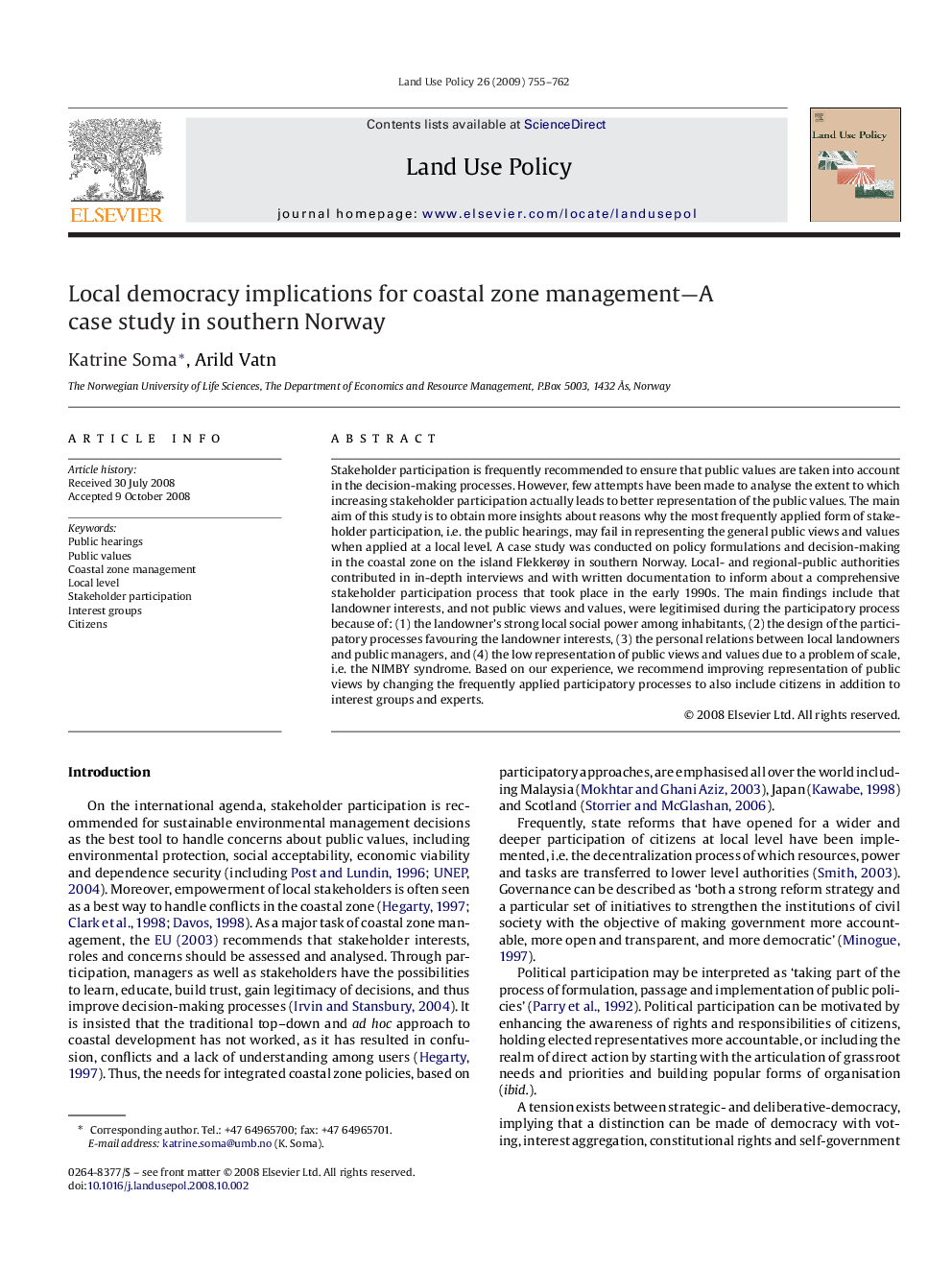| Article ID | Journal | Published Year | Pages | File Type |
|---|---|---|---|---|
| 93741 | Land Use Policy | 2009 | 8 Pages |
Stakeholder participation is frequently recommended to ensure that public values are taken into account in the decision-making processes. However, few attempts have been made to analyse the extent to which increasing stakeholder participation actually leads to better representation of the public values. The main aim of this study is to obtain more insights about reasons why the most frequently applied form of stakeholder participation, i.e. the public hearings, may fail in representing the general public views and values when applied at a local level. A case study was conducted on policy formulations and decision-making in the coastal zone on the island Flekkerøy in southern Norway. Local- and regional-public authorities contributed in in-depth interviews and with written documentation to inform about a comprehensive stakeholder participation process that took place in the early 1990s. The main findings include that landowner interests, and not public views and values, were legitimised during the participatory process because of: (1) the landowner's strong local social power among inhabitants, (2) the design of the participatory processes favouring the landowner interests, (3) the personal relations between local landowners and public managers, and (4) the low representation of public views and values due to a problem of scale, i.e. the NIMBY syndrome. Based on our experience, we recommend improving representation of public views by changing the frequently applied participatory processes to also include citizens in addition to interest groups and experts.
